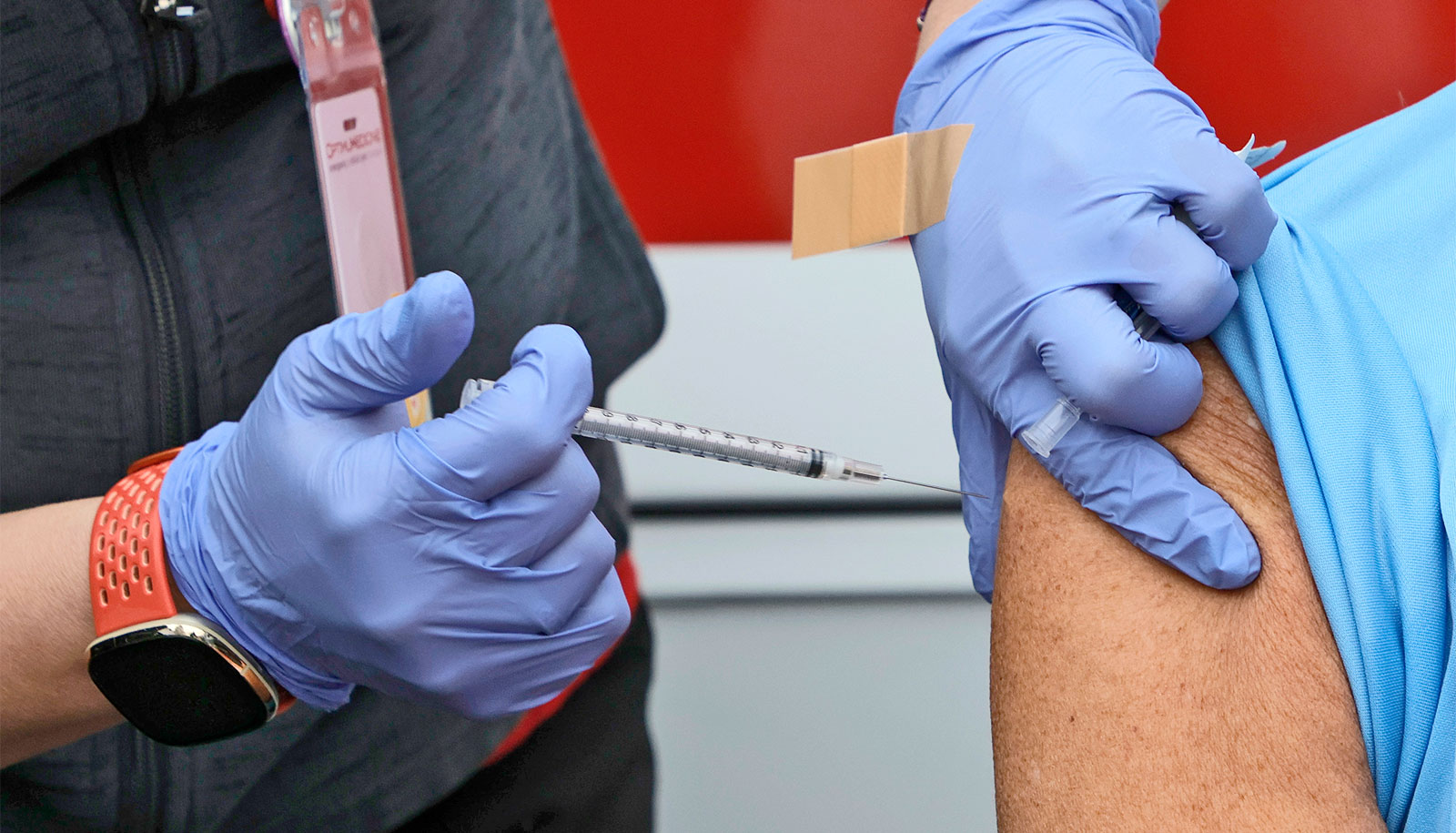Significant changes are potentially ahead for COVID-19 vaccine eligibility.
On May 27, Health and Human Services (HHS) Secretary Robert F. Kennedy, Jr., announced the vaccine will no longer be recommended for healthy children or pregnant women, a move that breaks with previous expert guidance. He publicized the change in a video on X, saying that it’s “common sense and it’s good science.”
This follows a May 20 vaccine policy framework from the Food & Drug Administration (FDA), published in the New England Journal of Medicine, stating that boosters will be available only to adults over 65 and younger individuals with one high-risk medical condition (confusingly, pregnant women were also included in this list). Manufacturers like Moderna and Pfizer will be required to run new clinical trials to prove whether boosters continue to benefit healthy individuals under 65.
These changes have significant implications for the fall vaccination campaign, with uncertainty over whether healthy people can still get a vaccine even if it’s not recommended for them and whether insurers will keep paying for the shots. The FDA previously said it would make the seasonal flu vaccine available to people of almost all ages and health risk levels.
On May 22, a Centers for Disease Control and Prevention (CDC) advisory panel presented new data showing that receiving a COVID booster last fall provided added protection, even in individuals who had been infected and previously vaccinated. The panel meets in June to make recommendations about the fall shots, but researchers seem skeptical that they will overrule these two new policy announcements.
Nahid Bhadelia is a Boston University Chobanian & Avedisian School of Medicine associate professor of infectious diseases. Bhadelia is also the founding director of the BU Center for Emerging Infectious Diseases Policy & Research (CEID), which works to improve international pandemic resilience, and she previously worked on the White House COVID-19 Response Team.
Here, Bhadelia digs into what to make of the recent COVID vaccine guidance changes—and whether you will be eligible for a shot this fall:
There were two significant changes this month to COVID-19 vaccine guidance. From a medical standpoint, do these changes align with what we know about COVID transmission and immunity?
The biggest thing that for me is troubling is that before you can even talk about the substance of the policy, the process is not regular. Generally, the FDA makes decisions about efficacy and safety, and the vaccination population immunization strategy is determined by CDC’s Advisory Committee on Immunization Practices (ACIP). So just the FDA director and the Vaccines and Related Biological Products Advisory Committee chair coming out and writing a New England Journal of Medicine paper to say this is now the policy, that is troublesome. It doesn’t follow what they say they want to do, which is to bring diverse perspectives into making decisions and policies. The idea of including more viewpoints is taken away. Readers should know that these kinds of policies are not made by edict. They’re made, by consensus, by expert committees that the agencies have put together. The process not being followed means there is no chance to have a public hearing period.
The second thing that is troublesome is the fact that there is this difference between influenza and COVID that’s drawn, and the explanation in the New England Journal paper [for that] doesn’t make sense. It seems more political than scientifically based when you draw distinctions that don’t exist between these types of vaccines. In their [the FDA director and Advisory Committee chair] paper, they says something about the seasonality of flu, versus COVID not being seasonal. But the issue actually doesn’t matter, because in some ways there is even more need for protection for COVID, which is year-round—it has been happening in the summer down south, when everybody is in air-conditioned rooms, and in the north, when everyone goes indoors.
A lot of Asian countries are seeing spikes in COVID cases. India is reporting a huge spike. Hong Kong is reporting a huge spike, and [both places] think that their spike—although there are new variants—is a cyclical thing; every time their immunity wanes, they get a spike in cases.
I think that by saying that people who are low-risk don’t need the vaccines anymore, you are missing the point that the virus evolves all the time. You may not be hospitalized, but you don’t want to be out for two weeks from COVID, as people sometimes are.
And there is also the risk of long COVID.
Yes, exactly. When you look at the studies that came out so far, many of the studies suggested that vaccination reduces the chances of long COVID.
They are putting a barrier to not just low-risk people getting vaccines, but potentially to high-risk people getting vaccines. In their paper, they start off by saying that a lot of European countries are not doing [boosters]. But we have a much different population than most European countries, with a high level of obesity and a high level of comorbidities. We are, at baseline, a population where many people are at high risk. When the HHS secretary came out to make this edict, he left out pregnancy as one of the high-risk things, which is really worrisome, because that’s a high-risk group.
The second issue is that insurance companies cover vaccines when the FDA says they’re okay to use, and the ACIP says these are the populations that probably should have one, and then we leave it open to everybody else. Then the insurance companies cover it. They talk about medical freedom, but they’ve taken away the freedom of people to make a personal choice to get their vaccine. And it doesn’t follow science, because they’re doing something different for the flu.
It is so confusing to figure out who’s high risk that most people will then say, “Oh, I don’t qualify,” or their insurance companies may just leave them out, even if they are high risk. So you may create barriers for even high risk.
Why do we use flu vaccines in healthcare workers? Not all healthcare workers are high risk. We use it because it decreases the incidence of severe disease, which a lot of times is correlated with high amounts of virus. When somebody is sick, they are creating a high level of the virus. COVID vaccines don’t block transmission completely, but do reduce the severity of disease and do blunt transmission by some amount. They reduce more symptomatic infections. It’s the reason why we encourage flu vaccines for everybody in the population. Because any cut you can make in the disease will have some impact in protecting others who are vulnerable as well, in addition to the people themselves who have it.
It’s a population-based strategy. It is not an individual-based strategy. They’ve taken that protection away in an environment where the virus is still continuously changing.
The CDC is scheduled to meet next month to talk about their recommendations. Am I correct in that?
Will they? I have no idea. I don’t know if they will in the end.
What role do you think clear, consistent communication from public health authorities can have? Do you think this will cause people to distrust the vaccine, or to simply say, “This is too confusing” and pass on the shot?
I think creating differences between COVID and flu already creates more [problems], both the chances of mistrust as well as the potential for confusion. I think that the clinicians are going to be confused, too. If you remember Paxlovid, there was so much confusion among clinicians about who is high risk and when to give. The education of clinicians is going to be important. But none of that matters if the insurance companies are going to restrict the use.
According to STAT, CVS charges $198.99 per COVID booster, without insurance.
It creates an inequity.
What advice can you give people who are waiting for more guidance?
Call your insurance company. Talk to your doctor. I want to underscore that even under the current [changes], a lot of people qualify. So don’t start with the presumption that you won’t.
And then I really hope that if you’re a pregnant woman, you have a conversation with your physician, because there is a lot of benefit that has been shown in terms of reducing COVID. The CDC still lists on their page that the COVID vaccine is highly recommended—that it remains the best protection against hospitalization for you and your baby. So if that’s the case, why are pregnant women taken off the high-risk list?
What might be the implications of changing this vaccine guidance in terms of herd immunity and preventing future outbreaks?
Let’s play this out. If more immunity wanes and fewer people have vaccines, more people will get the infection. And I think then they’ll just have to go through the infection to get to the level of immunity that they got. So, I think that it means that a few more people will have to take time off work. The most immediate thing is, as immunity wanes, there isn’t as much protection against COVID symptomatic infection, or more severe infection that doesn’t land you in the hospital, but potentially still puts you out.
At baseline, you would be shocked by the economic cost of the cold and flu season. I believe it’s in the billions [of dollars]. So this would be yet another disease that will potentially increase the number of people who have to take time off from work.
Anything else you are thinking about with this news?
I’m worried about the further politicization of vaccinations in the setting of one of the biggest measles [outbreaks] that we’ve had. There is a distrust [among] a growing number of parents, which is also being promoted by this administration. I am worried about this as the first step to a pathway where the administration and the HHS secretary can limit access to other vaccinations, both for adults and for children.
Like the measles, mumps, and rubella (MMR) vaccine?
Yeah, I’m nervous about that. I mean, we’re over 1,000 cases, and it’s only May. Globally, measles cases have gone up as well, because there have been disruptions on global vaccination campaigns during the COVID-19 pandemic. So we’re seeing a lot of measles around the world right now.
Source: Boston University



